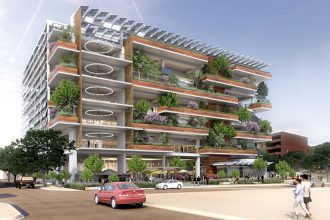The Global Capital Reallocation: Navigating the Post-Cycle Paradigm
The calendar flip to 2026 marks a decisive inflection point in the global real estate investment cycle. After years characterized by unprecedented quantitative easing, supply chain dislocation, and fluctuating inflation, institutional capital is pivoting from generalized risk-on strategies to highly selective, alpha-generating opportunities rooted in irrefutable demographic and technological shifts. The key imperative for high-net-worth investors (HNWIs), sovereign wealth funds, and private equity firms is no longer merely preserving capital, but achieving tangible real returns that outperform inflation and mitigate geopolitical beta inherent in today’s volatile global landscape.
The core challenge facing the market is the sustained decoupling of asset valuation from net operating income (NOI) growth due to elevated financing costs and prior yield compression. In 2026, the successful deployment of capital necessitates a move beyond purely core assets into core-plus and value-add strategies centered on demographic tailwinds, technology integration, and Environmental, Social, and Governance (ESG) compliance. Investors must meticulously underwrite assets that exhibit a strong resilience premium and offer structural growth insulated from cyclical economic fluctuations.
The New Investment Thesis: Defining Defensive and Offensive Real Estate Deployments
The defensive real estate deployment for 2026 focuses on low-volatility, high-occupancy assets that serve essential needs. These include specialized industrial logistics, workforce housing in supply-constrained urban cores, and highly secure data centers. These sectors benefit from structural demand elasticity and provide reliable cash flow, making them attractive hedges against macroeconomic uncertainty.
Conversely, offensive real estate deployment targets cities and sectors poised for transformative, non-linear growth driven by major capital and demographic shifts. This strategy often involves higher Basis Risk, but offers significant potential for capital appreciation. The five cities analyzed in this report have been selected because they uniquely offer a blend of both defensive resilience and offensive growth potential, anchored by distinct, high-conviction economic narratives. The following analyses provide a granular look at the market dynamics, regulatory environments, and specific asset classes that will define outperformance in 2026.
Global Gateway 1: Miami, Florida, USA: The Reshaping of the Americas’ Financial Corridor
Miami continues its meteoric ascent as a global finance and technology hub, solidifying its position as the premier gateway for capital flowing across the Americas and beyond. The city’s investment narrative is underpinned by continuous tax arbitrage migration of major financial institutions, venture capital firms, and high-earning individuals from high-tax jurisdictions, a trend that accelerated in the early 2020s and shows remarkable stamina into 2026.
Digital Transformation and Capital Inflow
Miami’s strategic policies attracting the technology and finance sectors have reshaped its commercial real estate (CRE) DNA. The influx of human capital, particularly ultra-high-net-worth individuals (UHNWIs) and skilled technology professionals, creates inelastic demand across multiple asset classes. While the Class A office market saw some moderation due to remote work shifts, the premium, newly built, amenity-rich Class A office space in submarkets like Brickell and Wynwood continues to command rent premiums, supported by corporate flight-to-quality mandates.
A major boon to the sector is the full repeal of the state’s commercial rent tax, which became effective on October 1, 2025. This legislative action instantly enhances the Net Operating Income (NOI) of leased commercial assets, translating directly into higher valuations and an improved investment yield profile, as investors can capture the former tax liability as additional income [Source 1.2].
The Opportunity in Class A Multifamily and Life Sciences
The multifamily sector in Miami presents a segmented investment landscape. The luxury high-rise market in areas like Edgewater and parts of Brickell is experiencing a surge in supply, leading to increased concessions and oversupply risk [Source 1.2]. For the discerning institutional investor, the true alpha lies in the often overlooked workforce and value-add housing sub-sector.
As of Q4 2025, Class A multifamily cap rates have remained relatively flat, hovering around 4.74% [Source 1.1]. However, workforce multifamily assets in rapidly emerging redevelopment zones like Allapattah and the established, yet underserved, Little Havana corridor are demonstrating superior cash flow potential, with cap rates currently ranging from 5% to 6% [Source 1.2]. These neighborhoods benefit from high occupancy and consistent rental growth driven by the essential service workers supporting the city’s expanding luxury and tech economies. This investment strategy aligns perfectly with modern Impact Investing mandates, focusing on stable, recession-resilient demand.
The Life Sciences sector, while nascent compared to Boston or San Diego, is poised for exponential growth. Miami’s anchor institutions, coupled with its proximity to Latin American markets and the migration of pharmaceutical and biotech founders, creates a fertile ground. Investors should focus on repositioning older, large-floorplate industrial or office buildings into state-of-the-art wet lab facilities. These specialized assets command lower vacancy rates and higher rents due to the significant barriers to entry in new construction.
The Industrial Resilience Premium: Miami’s industrial market near key transportation nodes (PortMiami and Miami International Airport) remains arguably the safest CRE sector. Despite slight increases in vacancy due to speculative construction, Class A logistics facilities continue to command record rents, driven by sustained demand for last-mile fulfillment and cold chain logistics essential for both e-commerce and pharmaceutical distribution [Source 1.2]. Underwriting in this sector must prioritize assets offering advanced automation capabilities and proximity to major population centers for efficient delivery orchestration.
Global Gateway 2: Singapore: The Apex of APAC’s Private Wealth Preservation
Singapore’s real estate market operates on a paradigm defined by scarcity, rule of law, and unparalleled political stability. In the turbulent economic environment of 2026, Singapore represents the quintessential risk-off haven for Asia-Pacific (APAC) institutional capital and global private wealth seeking long-term preservation and exposure to the region’s resilient digital economy.
Sovereign Wealth and Stability Premium
The city-state consistently ranks among the most transparent and stable investment environments globally. This stability premium attracts a massive influx of Family Office capital, which seeks to anchor their global portfolios in assets that are highly resilient to regional geopolitical volatility. For 2026, economists forecast Singapore’s economic growth to moderate slightly (1% to 3%), but sectors tied to digitalization, advanced manufacturing, and finance are expected to remain robust [Source 2.2]. The ongoing economic expansion in key regional trading partners, coupled with a benign monetary policy outlook from global central banks, further strengthens the investment climate [Source 2.3].
Strategic Industrial and Data Center Assets
The most compelling real estate narrative in Singapore is the extreme demand for highly specialized, Mission Critical infrastructure, particularly Data Centers. Even with government restrictions aimed at managing energy consumption, Singapore is actively reshaping its growth strategy through a focused Green Infrastructure Roadmap [Source 2.4]. This regulatory environment creates a high barrier to entry, ensuring that any newly approved capacity carries a significant premium.
The Data Center market size, valued at $1.20 billion in 2023, is projected to surge to $3.73 billion by 2030, reflecting a robust Compound Annual Growth Rate (CAGR) of 17.6% from 2024 to 2030 [Source 2.4]. This exponential growth is driven by the region’s accelerated adoption of Artificial Intelligence (AI) technologies and the immense need for hyperscale data center capacity to support the “Agentic Era,” where AI acts with autonomy and intent [Source 2.1]. Investment should be channeled into facilities that have demonstrably low Power Usage Effectiveness (PUE) and align with the country’s stringent decarbonization mandates, effectively de-risking the asset from future climate transition penalties. The scarcity of land and the stringent regulatory hurdles mean that existing, high-specification assets or strategic joint ventures with established operators represent the optimal path for capital deployment.
Industrial Revaluation: Beyond data centers, the industrial sector, particularly high-specification Business Parks and multi-tenanted logistics hubs, benefits from global efforts to diversify and localize supply chains. Assets supporting advanced manufacturing and biomedical sciences, often located in designated zones, offer superior lease quality and rent escalation clauses compared to general warehousing, reflecting their strategic importance to the national economy.
Global Gateway 3: Berlin, Germany: European Core’s Unexpected Value Proposition
Berlin remains one of Europe’s most dynamic and culturally magnetic metropolitan areas, yet its real estate market continues to be defined by a chronic and deepening structural housing deficit. While transactional volume for large-scale apartment buildings moderated in 2025 due to fluctuating interest rates and price discovery challenges, the fundamental supply-demand imbalance creates an irreversible upward pressure on rents and, eventually, asset values.
The Housing Supply Conundrum and Rental Growth
The city faces an estimated housing deficit of 120,000 to 150,000 units [Source 3.2]. Despite government efforts to “turbo-charge” residential construction, the pace of new development remains critically insufficient, hampered by high construction costs, labor shortages, and complex bureaucratic hurdles [Source 3.1, 3.2]. Berlin needs an estimated 15,000 to 20,000 new apartments annually, but completions fall significantly short of this target [Source 3.1].
This failure to meet demand results in an astonishingly tight rental market. The active market vacancy rate sits at an extremely low 0.3% [Source 3.1]. In Q3 2025, asking rents for existing properties in the resale market saw an impressive 8.3% year-on-year increase, reaching €16.35 per square meter [Source 3.1]. The combination of accelerating population growth, a large student demographic, and limited mobility ensures that residential rental yields, though historically low compared to the US, are structurally sound and poised for long-term appreciation, even against the backdrop of current rental regulations.
The investment focus must be on acquiring existing, well-located residential portfolios that can benefit from strategic repositioning or on supporting new construction projects that benefit from the government’s affordable housing subsidy programs (which allocated €1.5 billion annually for 2024 and 2025) to mitigate development risk [Source 3.4].
ESG Compliance and Sustainable Urban Development
For institutional investors targeting European assets in 2026, ESG compliance is not optional; it is a critical component of underwriting that dictates asset liquidity and access to lower-cost debt. The European Union’s Taxonomy Regulation increasingly penalizes non-compliant buildings, creating a genuine risk of Stranded Assets—properties that suffer unexpected devaluations due to climate transition risk.
Berlin offers a unique opportunity in Green Building Certification and asset decarbonization. Investors should acquire older buildings that are geographically prime, but currently inefficient, and deploy capital into aggressive retrofitting strategies. By improving energy efficiency, integrating smart building technologies, and achieving high EPC (Energy Performance Certificate) ratings, investors can not only reduce operational expenses but also substantially increase the asset’s valuation multiplier, accessing the “Green Premium” that compliant assets command in the European institutional market. This process transforms a value-add opportunity into a future-proof core asset.
Global Gateway 4: Dubai, UAE: Diversification Beyond Hydrocarbon Economics
Dubai’s transformation into a genuine global wealth magnet is the most spectacular real estate story of the mid-2020s, and its momentum is set to define 2026. The Emirate has successfully leveraged its zero-income tax policy, stable regulatory framework, and strategic Golden Visa programs to attract an unprecedented volume of global private wealth.
The Golden Visa Effect and Ultra-High-Net-Worth Migration
According to reports, Dubai topped the global wealth migration rankings in 2025, attracting an estimated 7,100 to 9,800 millionaires who are relocating from high-tax and politically uncertain jurisdictions, particularly the UK, Europe, and parts of Asia [Source 4.1, 4.2]. This relentless influx of UHNWIs creates a unique, hyper-premium market characterized by a distinct demand for luxury residential property (villas, branded residences, and ultra-high-end apartments) and the specialized commercial space needed to support them (Family Offices, private banking, and luxury retail).
The primary investment theme here is prime residential asset scarcity. While development continues at pace, supply of the most desirable, branded, beachfront, or skyline-defining properties remains constrained relative to the staggering demand from migrating billionaires and centi-millionaires [Source 4.1]. Investment strategies must focus on assets that cater directly to this top-tier demographic, ensuring properties are:
- Brand Affiliated: Carrying the name of a global luxury hotel or fashion house.
- Service Rich: Offering concierge, private amenities, and security protocols expected by the global elite.
- Location Superior: Proximity to key financial zones or exclusive residential enclaves like Palm Jumeirah or Emirates Hills.
Hospitality and Fractional Ownership Growth
The hospitality sector, fueled by consistent tourism and business migration, remains robust. Investors should analyze Revenue Per Available Room (RevPAR) trends, focusing on mid-to-high-end serviced apartments and luxury boutique hotels that capture both the long-stay business traveler and the short-term high-end tourist.
Beyond traditional ownership, Dubai is rapidly emerging as a center for PropTech innovation in the Middle East, particularly in security token offerings (STOs) and fractional ownership of large, prime assets. Tokenization allows retail and mid-tier HNWIs to access previously inaccessible prime real estate, providing liquidity and smaller investment units. Regulatory sandboxes established by the Dubai Financial Services Authority (DFSA) are paving the way for the securitization of real estate, making Dubai a key market for pioneering investors looking to capitalize on the intersection of Decentralized Finance (DeFi) and traditional property assets. For 2026, understanding the regulatory landscape for digital asset-backed real estate will be crucial for capturing next-generation investment flows.
Global Gateway 5: Seoul, South Korea: Harnessing Technological Infrastructure and Young Demographics
Seoul’s real estate market offers sophisticated investors exposure to one of the world’s most technologically advanced and globally competitive economies. The investment thesis in Seoul for 2026 is driven by the influence of the K-Economy—encompassing the powerful Chaebol conglomerates, a world-leading e-commerce penetration rate, and a highly educated, dense population base.
The K-Economy and Commercial Real Estate Synergy
The demand for premium office space in Seoul’s three core business districts (Gangnam, CBD, Yeouido) remains exceptionally strong. As of Q2 2025, the average vacancy rate across these districts was remarkably tight at 2.7%, and face rents continued their upward trend [Source 5.2]. This demand is sustained by the expansion of financial services, tech giants, and the corporate headquarters of the Chaebols (e.g., Samsung, LG), which prioritize flight-to-quality office relocations and premium headquarters to attract and retain top talent.
Investors should target Grade A office towers that integrate smart technology, prioritize environmental efficiency, and are strategically located near major transit hubs. The high occupancy and limited new development pipeline in core zones promise strong rental growth and highly secure long-term lease covenants.
Niche Investments: Cold Storage and Last-Mile Logistics
The most granular opportunity for aggressive growth in Seoul lies within the Industrial and Logistics sector, specifically in last-mile fulfillment and specialized cold storage. South Korea has one of the highest e-commerce penetration rates globally, necessitating a highly efficient, urban logistics network.
The Grade A logistics market in Greater Seoul experienced a recent supply surge, pushing the overall vacancy rate to 20.4% in Q2 2025 [Source 5.2]. However, this market is rapidly rebalancing. Due to structural constraints, construction delays, and financing failures, new supply for 2026–2027 is forecast to account for less than 5% of the current market size [Source 5.1]. This reduced pipeline is expected to drive the overall vacancy rate down to around 10% by 2027 [Source 5.1].
- Dry Storage vs. Cold Storage: There is a critical distinction in this market. Dry storage facilities are rapidly absorbing supply, with vacancy expected to fall below 4% [Source 5.1]. By contrast, the cold storage segment remains highly oversupplied, with sustained vacancy levels potentially above 30%, indicating a need for caution and highly specialized underwriting in this niche [Source 5.1].
- Last-Mile Premium: Assets that serve last-mile logistics, specifically in submarkets near Seoul like Goyang and Namyangju, are projected to see the highest rent increases. These centers provide indispensable infrastructure for rapid, urban delivery, making them essential assets for e-commerce operators and 3PL providers [Source 5.3, 5.4].
Investment strategy should prioritize high-specification, ramp-up dry storage assets designed for automation and situated for maximum last-mile efficiency, leveraging the projected supply contraction over the next two years.
Thematic Investment Deep Dive: PropTech and Alternative Sectors
Successful real estate investment in 2026 is increasingly dictated by an investor’s fluency in PropTech (Property Technology) and their willingness to underwrite assets in previously alternative, now mainstream, sectors. The ability to integrate technology into the asset lifecycle moves from a competitive advantage to an underwriting prerequisite.
The Emergence of Fractionalized Ownership and Blockchain
The concept of real estate tokenization and fractional ownership is moving from theoretical innovation to an actionable investment channel. By utilizing blockchain technology and issuing Security Tokens (STOs), large-scale commercial assets—such as prime office towers or multi-family portfolios—can be divided into digital, liquid, and tradable units. This fundamentally changes the mechanics of capital formation, offering:
- Enhanced Liquidity: Tokenized assets can be traded 24/7 on regulated digital exchanges, dramatically reducing the typical holding period and transactional friction of traditional real estate.
- Democratized Access: It allows a broader pool of accredited investors and institutions to access prime assets with smaller capital commitments, facilitating better portfolio diversification.
For investors, understanding the regulatory frameworks being established in hubs like Dubai and Singapore is critical. The optimal strategy is to partner with established FinTech platforms that are navigating the regulatory compliance necessary to issue and manage these digital securities, thereby accessing a new stream of capital and an exit path that bypasses traditional sales processes. This convergence of Real Assets and Digital Finance represents the next frontier in capital markets.
The Climate Transition Risk and Stranded Assets
As noted in the Berlin analysis, the global shift toward decarbonization presents profound physical and transition risks to real estate portfolios. Climate transition risk refers to the financial and regulatory changes (e.g., carbon taxes, stringent energy mandates) that can devalue non-compliant assets. An asset is considered “stranded” if it is unable to earn an economic return because it cannot meet new environmental standards without major, unfeasible capital expenditure.
A 2026 underwriting standard must include a rigorous Climate Resilience Audit. This goes beyond simple energy efficiency and requires assessing:
- Physical Risk: Vulnerability to extreme weather events (e.g., coastal assets in Miami, flood risk near rivers in Berlin). This necessitates detailed insurance modeling and potential capital expenditure on defenses.
- Transition Risk: The cost required to achieve net-zero carbon operations. Investors must calculate the cost of decarbonization and treat it as a mandatory capital reserve. Assets with high energy performance (low PUE, high Green Certification) will command a higher multiple and lower cost of capital from lenders who are also subject to ESG mandates.
The investment opportunity lies in the ability to identify Brown Assets (underperforming in terms of sustainability) that can be bought at a discount and converted to Green Assets through CapEx deployment, thereby unlocking significant value that the general market has yet to price in.
Underwriting for 2026: Beyond the Discounted Cash Flow
The complexity of the 2026 market demands a multi-factor underwriting approach that moves past reliance on simple Discounted Cash Flow (DCF) models. Successful capital deployment requires a nuanced evaluation of global financial headwinds, currency volatility, and unquantifiable geopolitical risks.
Risk Mitigation Strategies: Hedging Currency Volatility
In cross-border investment, currency fluctuations can erode investment returns faster than property appreciation can compensate. For international investors deploying capital into markets like Seoul (Korean Won), Berlin (Euro), or Dubai (pegged Dirham), robust currency hedging covenants are non-negotiable elements of the investment structure.
Strategies must include:
- Forward Contracts: Locking in an exchange rate for a future transaction date to mitigate short-term volatility.
- Natural Hedging: Matching asset-level currency liabilities (e.g., local currency operating expenses or debt service) with local currency income streams (rents).
- Currency Options: Providing the right, but not the obligation, to execute a transaction at a specific rate, offering flexibility in volatile markets.
Structuring deals with Cross-Border Investment Covenants that explicitly define currency risk-sharing between partners, or utilizing non-local currency denominated debt (where appropriate), provides essential downside protection in a world where central bank policies are diverging significantly.
The Due Diligence Checklist: Analyzing Geopolitical Beta
Every major global city carries a certain degree of Geopolitical Beta—the sensitivity of the investment to macro-level, non-economic events like trade disputes, regulatory changes, or regional conflicts. The 2026 investor must explicitly quantify this risk.
A comprehensive due diligence checklist should incorporate:
- Regulatory Stability Index: Analyzing the track record of local governments concerning property rights, taxation, and expropriation risk (e.g., Dubai and Singapore score highly; markets with frequent rent caps or sudden zoning shifts score lower).
- Trade and Tariff Sensitivity: For industrial and logistics assets, assessing the degree to which tenant performance is reliant on stable international trade agreements (e.g., German industrial demand is highly correlated with global trade health).
- Human Capital Risk: Evaluating the stability of talent supply, migration policies, and labor costs, particularly in high-wage tech centers like Miami and Seoul.
Ignoring these non-financial risk factors is the fastest path to significant capital impairment. The most resilient real estate portfolios in 2026 will be those that have proactively identified and structurally hedged against these complex, systemic risks.
Conclusion: The Prudent Path to Outperformance
The year 2026 demands a radical shift from passive capital deployment to highly sophisticated, selective investment strategies. The convergence of technology, demographic pressures, and stringent ESG mandates has created a real estate environment where generalized market exposure is insufficient.
The path to outperformance is clear: focus on structural growth stories in key global cities that offer demonstrable economic resilience. Whether it is capturing the workforce housing yield premium in Miami, accessing the hyperscale data center scarcity in Singapore, capitalizing on the rental market inelasticity in Berlin through green retrofitting, leveraging the UHNWI migration in Dubai, or serving the last-mile logistics demand of Seoul, success hinges on granular, asset-level due diligence.
The prudent investor in 2026 will not merely chase yield, but will actively create value by transforming assets through technology integration, ESG compliance, and rigorous geopolitical risk mitigation. This focused, sophisticated approach is the only way to achieve superior risk-adjusted returns and anchor a successful, multi-cycle real estate portfolio.











